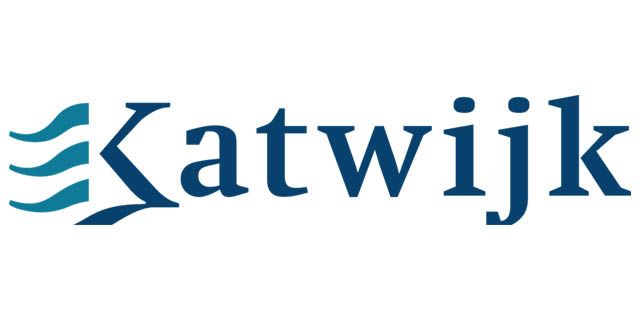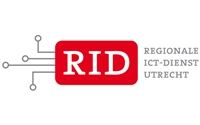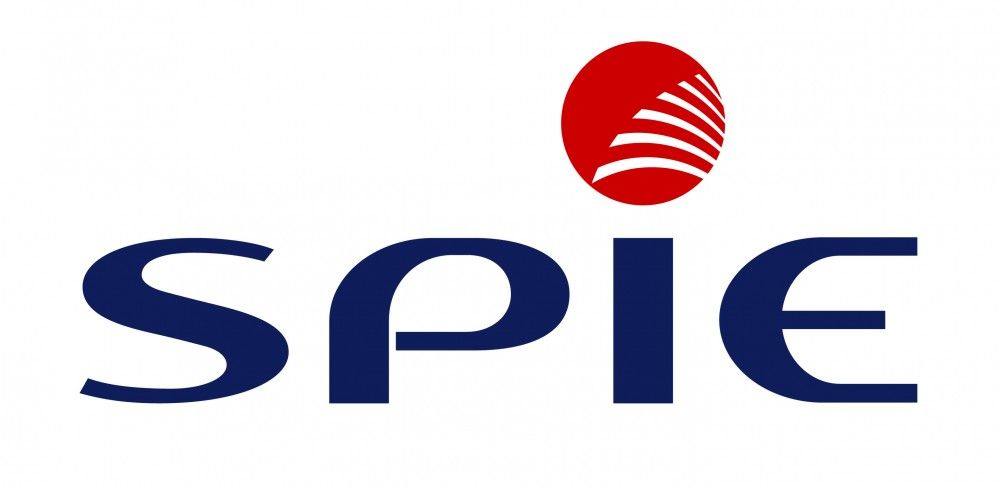Cursusbeschrijving
In deze vijfdaagse cursus System Center 2012 doen deelnemers kennis en vaardigheden op in het configureren en beheren van een locatie waarop de System Center 2012 Configuration Manager (SCCM) is geïnstalleerd en van de hieraan gekoppelde systemen; hierbij bekleden ze de rol van Configuration Manager-beheerders.
{tab Doelgroep}
De cursus is bedoeld voor beheerders die verantwoordelijk zijn voor de configuratie en het beheer van een of meerdere locaties waarop System Center 2012 Configuration Manager is geïnstalleerd en van alle ondersteunende systemen. Deelnemers hebben tot drie jaar ervaring met de ondersteuning van meerdere desktop- en servercomputers die draaien op Windows Server in middelgrote tot grote bedrijven. Beheerders kunnen ervaring hebben met eerdere versies van de Configuration Manager of nog onbekend zijn met het product.
{tab Voorkennis}
Before attending this course, students must have system administrator–level working knowledge of:
- Networking fundamentals, including TCP/IP and Domain Name System (DNS)
- Active Directory principles and management
- Windows Server management including Windows Server 2008/ Windows Server 2008 R2
- Microsoft Windows client fundamentals
- Deployment, configuration, and troubleshooting for Windows-based personal computers
- Microsoft SQL Server 2008 including Reporting Services
- Basic Public Key Infrastructure (PKI) concepts
- Desired: Have a base-level understanding of System Center Configuration Manager 2007
{tab Certificering}
Individuals who are interested in taking exam 70-243 TS: Microsoft System Center 2012 Configuration Manager, Configuring can also attend this course. Both Configuration Manager courses will be necessary to prepare for the exam.
{tab Vervolgcursus}
M10748 System Center 2012 Configuration Manager, Part 2: Deployment (70-243)
{tab Overige informatie}
This course will be delivered with digital courseware. In order to have the best learning experience you are asked to bring your own second screen to view the courseware. A second screen includes: tablets and laptops.
{/tabs} {slider Cursusinhoud|closed}
Module 1: Overview of System Center 2012 Configuration Manager
This module describes the System Center 2012 Configuration Manager feature set and explains how to manage sites by using the System Center 2012Configuration Manager Console.
- Introduction to System Center 2012 Configuration Manager
- Overview of the System Center 2012 Configuration Manager Architecture
- Overview of the Configuration Manager Console
- Tools for Monitoring a Configuration Manager Site
Lab : Exploring the Configuration Manager Console
- Exploring the Configuration Manager Console
- Searching in the Configuration Manager Console
Lab : Monitoring and Troubleshooting a Configuration Manager Site
- Configuring Status Summarizers
- Managing Components by Using Configuration Manager Service Manager
- Monitoring Site and Component Status
- Reviewing Log Files by Using Configuration Manager Trace Log Tool
After completing this module, students will be able to:
- Describe the purpose and functionality of System Center 2012 Configuration Manager.
- Describe the System Center 2012 Configuration Manager architecture.
- Identify and locate the management features available in the Configuration Manager console.
- Identify and use the tools available to monitor and troubleshoot a Configuration Manager site.
Module 2: Discovering and Organizing Resources
This module explains how to configure discovery methods, configure boundaries and boundary groups, manage user and device collections, and implement role-based security.
- Configuring Resource Discovery
- Configuring Boundaries and Boundary Groups
- Configuring User and Device Collections
- Configuring Role-Based Administration
Lab : Configuring Resource Discovery and Boundaries
- Configuring Active Directory Discovery Methods
- Configuring Boundaries and Boundary Groups
Lab : Configuring User and Device Collections
- Creating a Device Collection
- Creating a User Collection
- Configuring a Maintenance Window
Lab : Configuring Role-Based Administration
- Configuring a New Scope for Toronto Administrators
- Configuring a New Administrative User
After completing this module, students will be able to:
- Configure resource discovery.
- Configure boundaries and boundary groups.
- Configure user and device collections.
- Configure role-based administration.
Module 3: Managing the Configuration Manager Client
This module explains how to configure client deployment methods, configure client agent settings, and monitor client status.
- Overview of the Configuration Manager Client
- Deploying the Configuration Manager Client
- Managing Client Agent Settings
- Configuring and Monitoring Client Status
Lab : Deploying the Configuration Manager Client
- Preparing the Site for Client Installation
- Deploying the Configuration Manager Client by Using Client Push Installation
- Deploying the Configuration Manager Client by Using Group Policy
Lab : Managing Client Agent Settings
- Configuring Client Agent Settings
Lab : Configuring and Monitoring Client Status
- Configuring and Monitoring Client Communication and Health Status
After completing this module, students will be able to:
- Describe the requirements for installing the Configuration Manager client.
- Describe the site roles and methods used to deploy the Configuration Manager client.
- Describe how to configure the client agent settings.
- Describe how to monitor client health.
Module 4: Managing Inventory and Software Metering
This module explains how to configure and manage hardware and software inventory, monitor inventory data flow, and use Asset Intelligence and Software Metering.
- Overview of Inventory Collection
- Configuring Hardware Inventory
- Configuring Software Inventory
- Managing Inventory Collection
- Configuring Asset Intelligence
- Configuring Software Metering
Lab : Configuring and Managing Inventory Collection
- Configuring Hardware Inventory
- Configuring Software Inventory
Lab : Configuring and Managing Asset Intelligence
- Preparing the Site for Asset Intelligence
- Configuring Asset Intelligence
- Customizing Asset Intelligence
- Viewing Asset Intelligence Reports
Lab : Configuring Software Metering
- Configuring Software Metering
After completing this module, students will be able to:
- Describe inventory collection.
- Configure and collect hardware inventory.
- Configure and collect software inventory.
- Manage inventory collection.
- Configure asset intelligence.
- Configure software metering.
Module 5: Querying and Reporting Data
This module explains how to create queries and run reports by using Reporting Services.
- Introduction to Queries
- Managing Queries
- Configuring SQL Server Reporting Services
Lab : Creating and Running Queries
- Creating Data Queries
- Creating Status Message Queries
Lab : Configuring Reporting
- Configuring a Reporting Services Point
After completing this module, students will be able to:
- Describe data and status message queries.
- Configure and manage data and status message queries.
- Configure and manage SQL Server Reporting Services in Configuration Manager.
Module 6: Managing Software Deployments by Using Packages and Programs
This module explains how to create and deploy packages and programs.
- Configuring Software Distribution
- Distributing Content to Distribution Points
- Configuring Packages and Programs
- Deploying Programs to Configuration Manager Clients
Lab : Managing Software Deployment by Using Legacy Software Distribution
- Preparing the Infrastructure for Software Deployment
- Creating a Package and Configuring Programs
- Distributing Content to a Distribution Point
- Deploying a Program to Configuration Manager Clients
After completing this module, students will be able to:
- Describe the software distribution process and configure software distribution settings.
- Distribute content to distribution points.
- Configure packages and programs.
- Deploy programs to Configuration Manager clients.
Module 7: Creating and Deploying Applications
This module explains how to create and deploy applications by using the System Center 2012 Configuration Manager application model.
- Application Management in System Center 2012 Configuration Manager
- Creating Applications
- Deploying Applications
- Configuring the Application Catalog
Lab : Creating and Deploying an Application
- Creating and Deploying a Required Application
- Creating and Deploying an Available Application
Lab : Deploying Applications from the Application Catalog
- Preparing the Infrastructure for the Application Catalog
- Creating and Publishing an Application in the Application Center
After completing this module, students will be able to:
- Describe the application model in System Center 2012 Configuration Manager.
- Create applications.
- Deploy applications.
- Install and configure the Application Catalog.
Module 8: Managing Application Deployment
This module explains how to configure application deployment requirements, application supersedence, application un-installation, and multiple deployment types.
- Configuring Application Deployment Requirements and Dependencies
- Configuring Application Supersedence and Un-installations
- Configuring Multiple Deployment Types and User Device Affinity
Lab : Configuring Application Installation, Supersedence, and Un-installation
- Creating an Application with Requirements
- Configuring Application Supersedence
- Configuring Application Un-installations
Lab : Configuring Multiple Deployment Types and User Device Affinity
- Configuring User Device Affinity
- Creating an App-V Deployment Type for an Existing Application
After completing this module, students will be able to:
- Configure application deployment requirements and dependencies.
- Configure application supersedence and un-installations.
- Configure multiple deployment types and user device affinity.
Module 9: Deploying and Managing Software Updates
This module explains how to deploy and manage software updates.
- Overview of Software Updates
- Preparing the Configuration Manager Site for Software Updates
- Managing Software Updates
- Configuring Automatic Deployment Rules
- Monitoring and Troubleshooting Software Updates
Lab : Configuring the Site for Software Updates
- Configuring and Synchronizing the Software Update Point
Lab : Deploying and Managing Software Updates
- Determining Software Update Status
- Deploying Software Updates
- Configuring Automatic Deployment Rules
After completing this module, students will be able to:
- Describe the Software Update feature.
- Prepare the Configuration Manager site for software updates.
- Manage Software Update evaluation and deployment.
- Configure Automatic Deployment rules.
- Monitor and troubleshoot software updates.
Module 10: Implementing System Center 2012 Endpoint Protection
This module explains how to integrate and implement System Center 2012 Endpoint Protection with System Center 2012 Configuration Manager.
- Overview of System Center 2012 Endpoint Protection
- Deploying System Center 2012 Endpoint Protection
Lab : Implementing System Center 2012 Endpoint Protection
- Installing System Center 2012 Endpoint Protection
- Creating and Deploying Client Settings by Using Endpoint Protection Policies
After completing this module, students will be able to:
- Describe the features provided with System Center 2012 Endpoint Protection.
- Deploy and configure Endpoint Protection to devices.
Module 11: Managing Operating System Deployment
This module explains how to deploy operating systems by using the System Center 2012 Configuration Manager infrastructure.
- Overview of Operating System Deployment
- Preparing the Site for Operating System Deployment
- Capturing an Operating System Image
- Deploying an Operating System
Lab : Preparing the Environment for Operating System Deployment
- Configuring the Network Environment for Operating System Deployment
- Managing Site System Roles Used to Support Operating System Deployment
- Managing Packages to Support Operating System Deployment
Lab : Building and Capturing a Reference Image
- Creating a Build and Capture Task Sequence
- Capturing the Reference Computer
Lab : Performing an In-Place Upgrade
- Preparing the Operating System Image
- Creating a Task Sequence to Deploy an Image
- Deploying an Image
After completing this module, students will be able to:
- Describe operating system deployment.
- Prepare a site for operating system deployment.
- Capture operating system images.
- Deploy operating systems.
Module 12: Managing Compliance Settings
This module explains how to manage configuration items and baselines to assess and remediate the compliance of settings on devices.
- Introduction to Compliance Settings
- Configuring Compliance Settings
- Viewing Compliance Results
Lab : Managing Compliance Settings
- Managing Configuration Items and Baselines
- Viewing Compliance Settings Reports
- Using Remediation in Compliance Settings
After completing this module, students will be able to:
- Describe the compliance settings feature.
- Configure the compliance settings feature.
- View compliance results.
Module 13: Managing Mobile Devices
This module explains how to configure the mobile device management settings.
- Configuring Mobile Device Management
- Depth Management of Mobile Devices
- Deploying Applications to Mobile Devices
Lab : Managing Mobile Devices
- Preparing the Infrastructure for Mobile Device Management
- Enrolling and Securing a Mobile Device
- Deploying an Application to the Mobile Device
After completing this module, students will be able to:
- Describe the mobile device management feature.
- Describe how in-depth management is used to manage supported mobile devices.
- Deploy applications to mobile devices.
Module 14: Configuring Wake On LAN, Power Management, and Remote Control
This module explains how to configure Wake On LAN, Power Management policies, and Remote Control.
- Configuring Wake On LAN
- Configuring Out of Band Management
- Configuring Power Management Settings
- Configuring Remote Control
Lab : Configuring Power Management Settings
- Applying a Custom Power Management Plan and Policy
Lab : Configuring Remote Control
- Configuring the Remote Control Client Settings and Permissions
- Managing the Business Desktop Support Team by Using Remote Control Tools
After completing this module, students will be able to:
- Configure Wake On LAN.
- Configure Out of Band management.
- Configure the power management settings.
- Configure Remote Control administration options
{slider Doelstellingen} After completing this course, students will be able to:
- Describe the System Center 2012 Configuration Manager feature set.
- Discover and organize resources.
- Manage the Configuration Manager client.
- Manage inventory and software metering.
- Query and report data.
- Manage software deployments by using packages and programs.
- Create and deploy applications.
- Manage application deployment.
- Deploy and manage software updates.
- Implement System Center 2012 Endpoint Protection.
- Deploy operating systems by using System Center 2012 Configuration Manager.
- Manage compliance settings on devices.
- Manage mobile devices.
- Configure Wake On LAN, Power Management, and Remote Control.
{/sliders}
Meer weten over dit onderwerp?
We verzorgen verschillende verschillende cursussen! Laat hieronder uw gegevens achter en we sturen u vrijblijvend een uitgebreid overzicht toe met alle mogelijkheden.


























